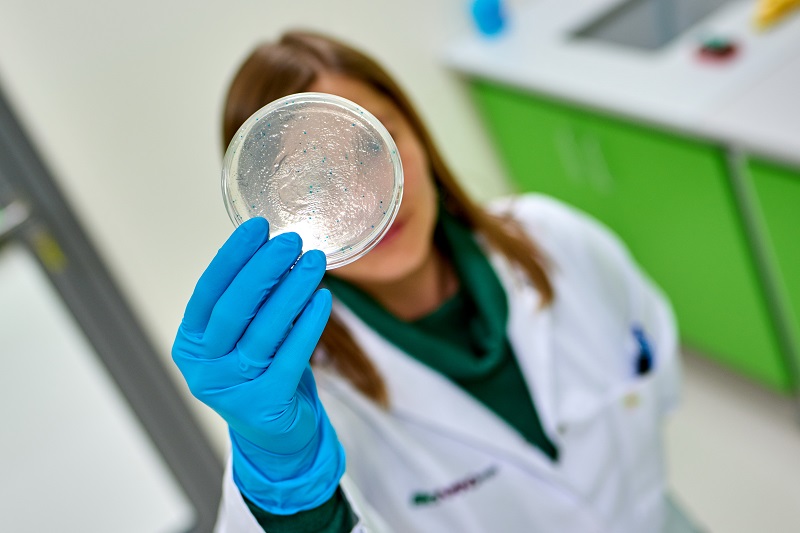Cosmetics
- Examination of the microbiological purity of products and cosmetics raw materials, process water, packages
- Performance assessment of preservatives
- Total antioxidant capacity test
- Extract obtaining in laboratory scale (method development)
- Oil in water emulsion preparation in laboratory scale
- Spray drying of water solution in laboratory scale (method development)
- Development of cosmetics formulation
- Comparison analysis of chosen cosmetics compounds
- Species identification in cosmetics raw materials samples
- Cyto- and genotoxity tests on cell lines, such as: primary skin fibroblasts and cells sampled from idividual person
- AMES genotoxity test
- Alergens determination
Organoleptic assesment (appereance, color, fragnance, consistency)
Qualitative/quantitive analysis or determination of:
- Preservatives
- Frangnances in cosmetics products
- Volatile fatty acids
- Fatty acids esters
- Fats iodine index
- Fats acid index and acidity
- Fats peroxide index
- Saponification number
- Residual extraction solvents
- Illegal substances
- Limited substances in plant extracts
- Dry residue
- Emulsion stability
- pH
- Antioxidants
- Organic and non-organic comopunds and produced materials, e.g. cosmetics raw materials)
- Imaging of lipid-rich structures (skin cells, fats, emulsions, emolients)
- Characteristics of micro- and nanoparticles added to cosmetics, such as: microdiamonds, (np. silver and gold nanoparticles
- Cellular uptake of micro- and nanoparticles
- Measurement of molecules size , such as: micro- and nanoparticles, nanotubes, polymers and biomolecules
- Examination of drug morphology/ structure, such as: micro- and nanoparticles, microspheres
- Imaging of hair surface (before and after hairdressing treatments)
- Determination of surfactants critical micellar concentration
- Examination of the influence of surfactants critical micellar concentration on micelles size
- Quality control through determination of products olfactory profile
- Examination of product, drug precursors and raw materials stability
- Quality control through temperatur stability measurement, e.g. proteins
- Examination of pH, additives and temperature influence on chosen protein compounds
- Cosmetics molecules analysis and visualisation
- Molecule hydrophilicity and hydrophobicity determination
- Dipole moment determination
- Analysis of molecular interactions



